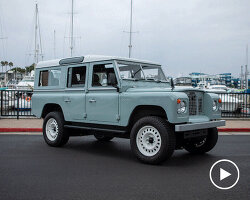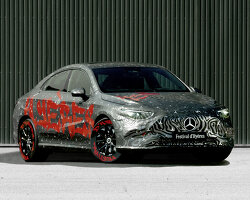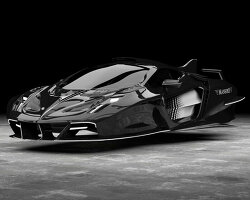eVTOL LEO coupe flies as a jet turbine-propelled, 3-seater car
Pete Bitar of Electric Jet Aircraft and Carlos Salaff of SALAFF Automotive looked to manifest the flying cars seen in science fiction movies, those with flat wings, eccentric design, and high-speed propulsion. Drawn from the emergence and developments of advanced technologies, the duo saw the tipping point of futuristic cars and thought that compact flying cars are no longer impossible to develop and actualize. To test out their theory, they founded LEO Flight in the spring of 2020 and in the midst of the coronavirus pandemic as a joint venture to design and produce eVTOL flying cars. The research-fueled and expertise-driven team has now introduced the LEO Coupe, an all-electric jet turbine-propelled vertical takeoff and landing (eVTOL) with a three-seater car design.
As they describe it, LEO Coupe evokes the familiar facets of a common electric automobile while steering off the foundational impressions of what an aircraft could look like. The two founders install internal propulsion into their flying car and make it in compact form to let LEO Coupe hold implications for the future of the aerial ecosystem, supported by the company’s VERTISTOP charging network. Bitar and Salaff imagine a near future where society transitions from a ground-mobility culture to a sky-faring one. As the duo likes to word it, they envision life on the ground and in the air becoming greener, less stressful, and more peaceful for all.

Images from LEO Flight
eVTOL LEO coupe is compact and DARPA-funded
The LEO Coupe acts as the brainchild of two creators who have the desire to build an aircraft that deviates from having the resemblance to an airplane or helicopter. For Bitar and Salaff, the hypercar is a personal automobile for the sky that science fiction has foreseen, a personal, creative project turned into a mission to manufacture it for public use. When positioned beside eVTOL aircrafts these days, LEO Coupe’s compact size of 10′ x 20′ enables it to be privately owned, used as an air taxi, and as a vehicle in any place where space is limited and ground infrastructure is underdeveloped or nonexistent, allowing it to fit inside a two-car garage.
Its fully electric propulsion system consists of electric jets to guarantee safety through redundancy, and hidden rotors are placed within LEO’s wings to swerve against danger to those around the vehicle. The company says that LEO’s safety is bolstered by a proven, DARPA-funded propulsion system by Electric Jet Aircraft. Stepping inside the vehicle, gull-wing doors open from the side to an airy, minimal cabin carved for three adults including the pilot. Adventure awaits the pilot whose floating seat enhances the exhilaration of the flight and Bitar and Salaff’s semi-autonomous controls hope to make the flight easier to control. ‘Until fully-autonomous tech is mature, we believe there is nothing like a human pilot on board for added safety and security,’ the duo shares.
Since advanced technologies keep reaching new heights, the duo also integrates a 5G connected system into the hypercar, so that during the flight, users can check into or book their hotel rooms, fill up forms and documents, or arrange any travel-related agendas while enjoying the landscapes and horizons through the generous, tall windows carpeting the vehicle. Bitar and Salaff also ensure their clients that LEO Coupe flies fast with a 250-mph flight speed and over one hour of flight time per charge to rapidly commute between places. As an air taxi, LEO’s compactness will allow it to be accessible from most places and spaces, making it ideal for fire rescue, medical emergencies, coast guard missions, tourism, exploration, and most terrain without developed road infrastructure.

eVTOL LEO coupe is a jet turbine-propelled, 3-seater flying car
eVTOL LEO Coupe’s developments and testing
Bitar’s company Electric Jet Aircraft has created an electric jetpack design that uses clusters of electric jets for lift, a product that received the Defense Advanced Research Projects Agency contract for further development. The duo marks it as significant since the technology forms the foundation for LEO Coupe. They also won the NASA HeroX award for their aerial mobility design and mission as part of NASA’s Convergent Aeronautics Solutions where the theme touched on ‘Future-Scaping Our Skies’ that aimed to map societal, economic, technological, environmental, political, and regulatory trends to the future of aviation. Bitar and Salaff took up the challenge, brought home the award, and acknowledged the win as a great way to share the network they have been building.
On June 23rd, the duo wrote that in just the past four months, LEO Flight has built three LEO Coupe feasibility prototypes, and flight-tested two. ‘The ArcSpear is an electric-jet-powered drone with which we have tested the LEO Coupe’s flight control system and components. During Testing, the ArcSpear has displayed very smooth, stable flight characteristics, even at speeds around 100mph. The ArcSpear has helped us verify the feasibility of hardware and software that will go directly into LEO Coupe alpha prototypes,’ the duo shared. After that, they also announced that they recently finished building the LX-1, a manned alpha prototype of the LEO Coupe’s clustered VTOL and forward jet-flight systems, which has already undergone component testing.
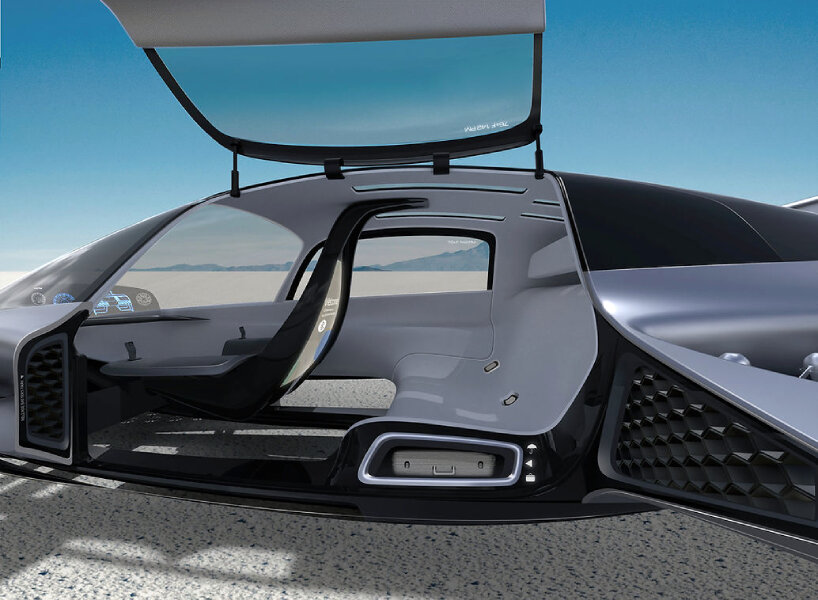
Gull-wing doors of eVTOL LEO coupe
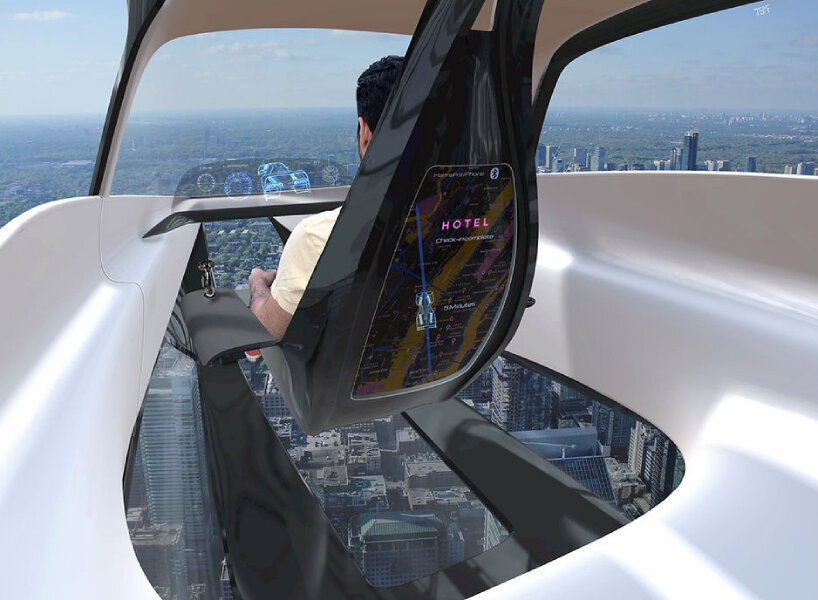
The pilot seat of eVTOL LEO coupe

eVTOL LEO coupe has an integrated 5G system

eVTOL LEO coupe is a compact jet turbine-propelled, 3-seater flying car
project info:
name: LEO Coupe
company: LEO Flight
team: Pete Bitar and Carlos Salaff
airplane design (199)
car design (859)
electric automobiles (663)
eVTOL (70)
flying car (77)
helicopters (30)
PRODUCT LIBRARY
a diverse digital database that acts as a valuable guide in gaining insight and information about a product directly from the manufacturer, and serves as a rich reference point in developing a project or scheme.






